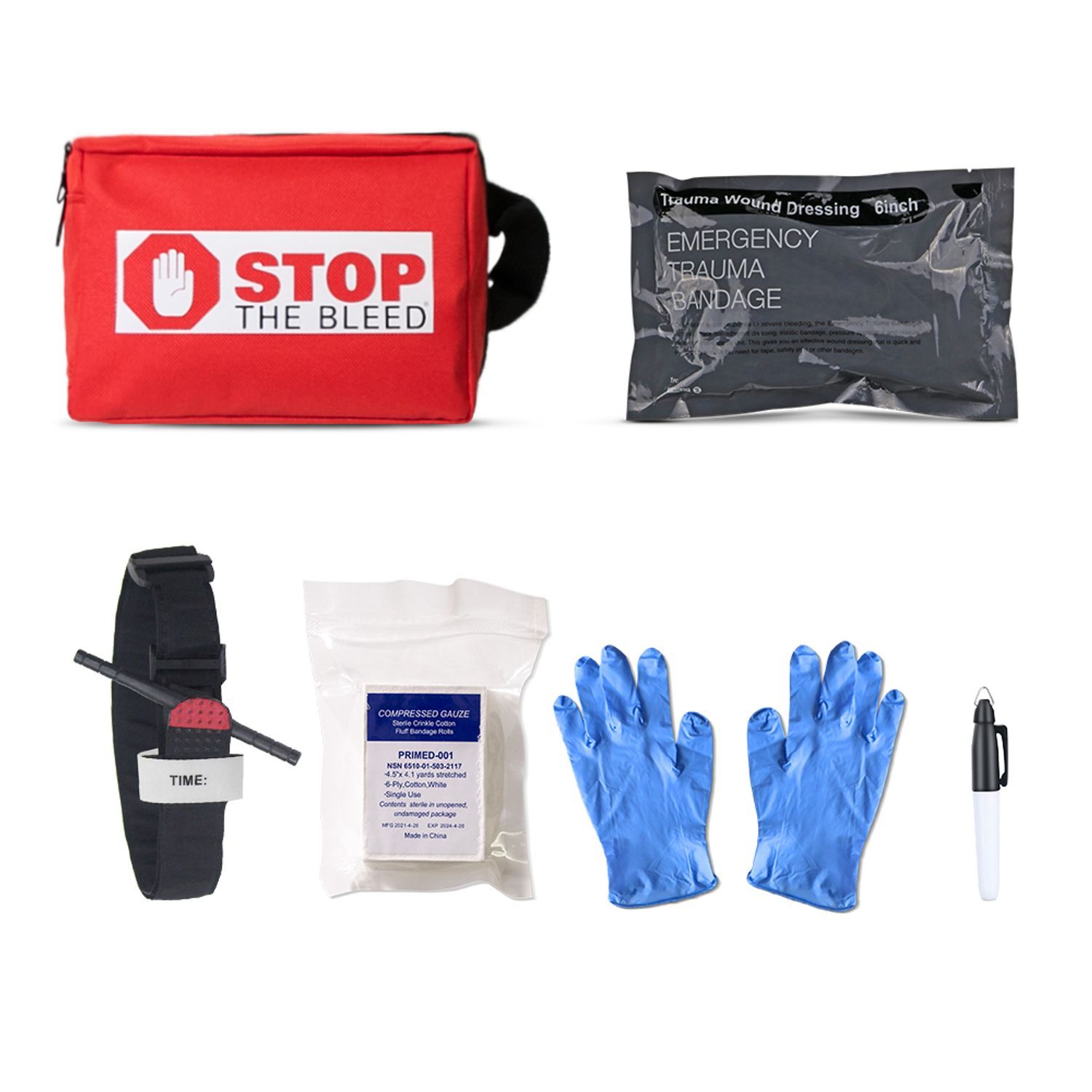
GET A QUOTE
How to Stop a Wound from Bleeding?
Bleeding injuries can happen at any time, whether it’s from a small cut or a more serious trauma.Knowing how to stop a wound from bleeding quickly and effectively—and how to stop bleeding from injury in general—can make a significant difference in saving lives and preventing further complications. In this guide, we’ll cover the importance of stopping a wound from bleeding, essential first-aid steps to control bleeding, and introduce you a must-have tool for anyone serious about emergency preparedness-----the Stop the Bleed Medical Office Emergency Kit.
Why Is Stopping Bleeding So Important?
When a wound begins to bleed, it’s not just the blood loss that poses a risk—it’s the potential for shock, infection, and even death if the bleeding isn't controlled quickly. Immediate first aid can help stop excessive blood flow, reduce the risk of complications, and stabilize the person until professional medical help arrives. That’s why it's essential to know how to stop bleeding, how to stop the wound from bleeding, and manage it efficiently.
How to Handle Severe Bleeding: First-Aid Steps
Severe bleeding can be life-threatening. Here's what to do if you’re in this situation.
- Call for Help: If the injury appears to be deep, or if you're not sure how serious it is, it's important to seek professional medical help immediately. Don't hesitate to call 911 or your local emergency number. Time is of the essence when dealing with serious injuries and getting professional help as soon as possible can make all the difference. Emergency services are trained to deal with serious situations and can provide the necessary care, transport and treatment to prevent further harm.
- Protection before emergency measures: Treating a bleeding injury, especially in an emergency situation, can expose you to harmful bacteria, bloodborne pathogens, or other contaminants. If you have access to gloves or other protective equipment, such as face shields, masks or goggles, it's important to put them on before touching the wound or coming into direct contact with the injured person.
- Assess the Injury: When dealing with a bleeding injury, it's important to assess the wound thoroughly to understand the severity and location of the damage. Start by carefully removing any clothing, dirt or debris from around the wound. This will give you a clear view of where the bleeding is coming from and whether there are multiple areas of injury that may need attention. Be careful when handling clothing or debris as any unnecessary force could cause further damage to the affected area.
- Stop the Bleeding: It's important to know how to stop a bleeding cut and how to stop bleeding from injury by covering the area with sterile gauze or a clean cloth. Apply firm pressure with the palm of your hand until the bleeding stops. If the injury involves the eye or has an embedded object, avoid pressing directly on it. Don't apply pressure to head injuries, especially if a skull fracture is suspected.
- Wrap and Elevate: When the bleeding is under control, the next step is to wrap the wound tightly with a clean cloth, sterile gauze or bandage. This will help keep the dressing in place and further reduce the risk of infection. Take care not to wrap too tightly, as this can restrict circulation. If the injury is to an arm or leg, try to elevate the injured limb above heart level. This will help reduce blood flow to the area, minimising swelling and further bleeding.
The Best Solution: Stop the Bleed Medical Office Emergency Kit
For those looking for a compact, portable, and customizable first aid box, the Stop the Bleed Medical Office Emergency Kit by Risen Medical is a top choice.
Features of the Medical Office Emergency Kit
1.Compact and Efficient: Specifically designed to be small and lightweight, this kit ensures that essential medical supplies are easily manageable and accessible in any emergency situation.
2.Highly Portable: The kit's portable design makes it ideal for inclusion in medical office emergency setups or for personal carry during travel, ensuring you're always prepared to stop severe bleeding quickly.
3.Durable and Waterproof: Constructed with durable, waterproof materials, this first aid kit stands up to various environmental conditions, making it suitable for both indoor and outdoor use.
4.Easy to Use: Each component of the Stop the Bleed kit is designed for rapid deployment, with features like quick-open zippers and clearly organized compartments that allow for immediate access in critical situations.
5.Versatile Application: This medical office emergency kit is not only a vital resource for medical offices but also for schools, homes, and public spaces, providing crucial support in the event of an emergency.
6.Easy Maintenance: The waterproof material also makes the kit easy to clean, an essential feature for maintaining hygiene and readiness after use.
7.Multipurpose Use: Beyond just stopping bleeding, the contents of the medical office emergency kit can address a variety of medical emergencies, making it a versatile addition to any emergency preparedness strategy.
Conclusion
It's important to be prepared for a bleeding emergency and understand how to stop a bleeding cut, whether you're at home, in the office or in the field. Knowing how to stop a bleeding wound, understanding the different types of bleeding and having the right tools to hand can make a life-saving difference. Whether you’re dealing with minor cuts or severe injuries, knowing how to stop bleeding from injury and how to stop the wound from bleeding is critical.
The Stop the Bleed Medical Office Emergency Kit provides a practical, portable and efficient solution for anyone who wants to be prepared in the event of an emergency. Don't wait for an accident to happen - equip yourself with the right tools and knowledge to respond quickly and confidently when bleeding occurs.

